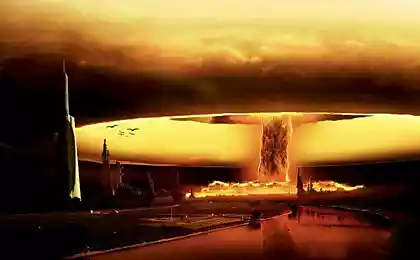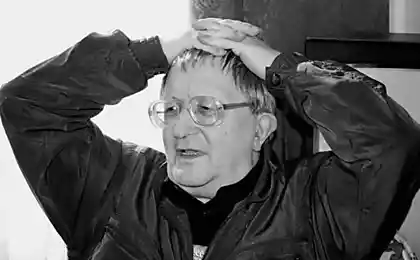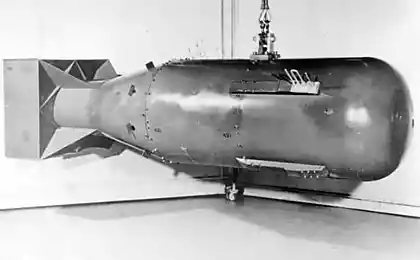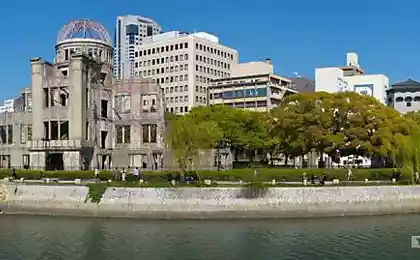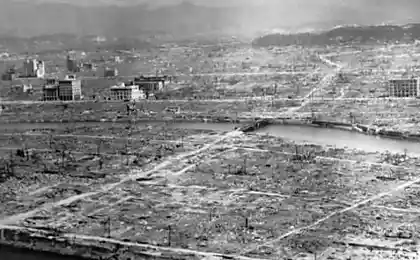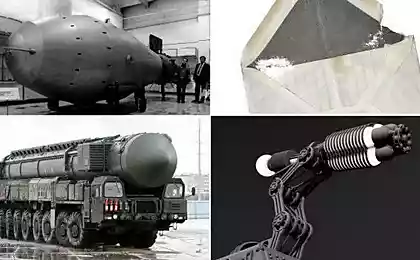829
Hiroshima.
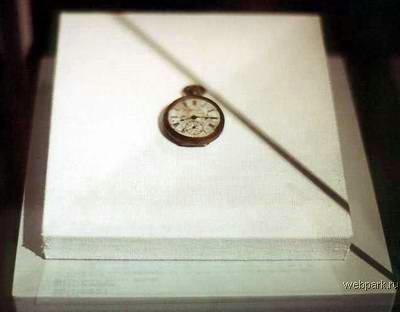
August 6 at about 8 am on Hiroshima had two bomber "B-29". The alarm was given, but, seeing that the aircraft is small, everyone thought that it was not a big plaque, and intelligence. About an hour earlier, the Japanese early warning radar detected the approach of some American aircraft to proceed to the southern part of Japan. It was a warning and a radiogram taken in many cities, among them Hiroshima. Aircraft approached the coast at a very high altitude. Approximately at 8:00 radar operator in Hiroshima determined that the number of aircraft flying up very small - probably no more than three - and the air raid alert was canceled. In a typical radio sounded a warning for people to go down to shelters if B-29s will do, but after a reconnaissance raid was not expected. People continued to work without going to the shelter, and looked at the enemy planes. When the bombers reached the city center, one of them dropped a small parachute, after which the aircraft flew away. Immediately thereafter, 8 hours and 15 minutes, there was a deafening explosion that appeared in an instant tore the sky and the earth. The bomb exploded in a blinding flash in the sky, a huge gust of rushing air and a deafening roar, that spread for miles from the city; accompanied by the destruction of the first sounds of crumbling houses, sprawling fire, a giant cloud of dust and smoke cast a shadow over the city.
Continuing - photos are not for the faint hearted. The nuclear bombing of the Japanese cities of Hiroshima (Hiroshima) and Nagasaki (Nagasaki) claimed the lives of more than 250 thousand people.
US occupying forces imposed strict censorship on photographs that directly or indirectly affect the magnitude of the disaster. All that "might in any way disturb the peace of our citizens" were seized and sent to the Pentagon archives. These photos were stored for a long time classified as "top secret". Some of them were published much later, when the noise died down. Either way, they reflect the human tragedy, which we simply must never forget.
Part 1: Signals
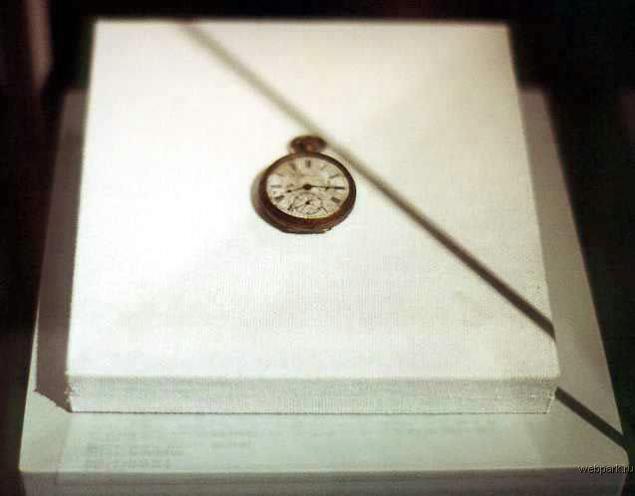
All the watches found in the disaster area, stopped at around 8:15 am, the time of the explosion.

Close to the epicenter of the explosion the temperature was so strong that most of the living creatures was instantly turned into steam. Shadows on the parapets of the people imprinted even half a mile to the south-southeast of the epicenter on the bridge Yarozuyo (Yorozuyo Bridge). All that remains of the people of Hiroshima, sitting on the rocks, which are not oplavilis - a handful of black shadows.
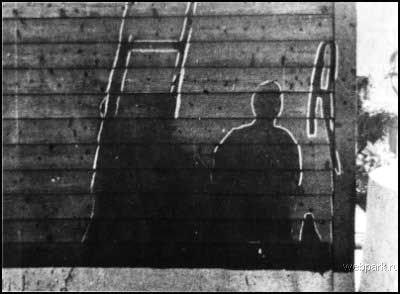
Photo below shows how the marble steps of the bank, which is a woman, there was only a trace of her, scorched terrible heat.

Part 2: Murder
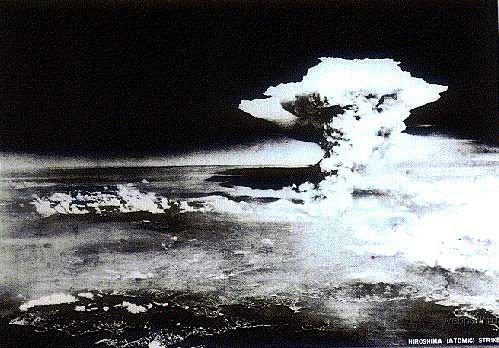
On August 6, 1945 at exactly 8.15 am, with the uranium atom bomb exploded at a filling height of 580 meters above the city of Hiroshima. It exploded with a blinding flash, a giant fireball and a temperature of more than 4000oS degrees above the ground. Fiery waves and radiation spread instantly in every direction, creating an overpressure blast of air that brings death and destruction. In just a few seconds of 400-year-old city it was virtually reduced to ashes. Humans, animals, plants, and any other organic body were evaporated. Sidewalks and asphalt melted, collapsed buildings and dilapidated buildings were demolished by the blast.
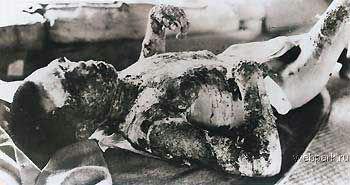
Women, men and children, caught off guard during the explosion of an ordinary working day, were killed horribly. Their internal organs are immediately cooked, bones from the terrible heat turned into hard coal.
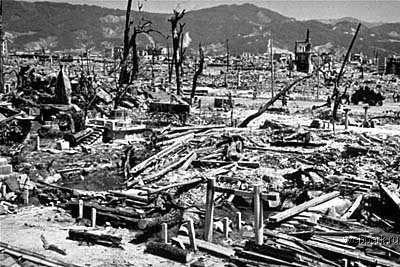
Not even in the center of the explosion the temperature was so high that allows you to instantly melt the steel and stone. For a second, 75,000 people were injured and burns incompatible with life. More than 65% of the deaths were in children nine years old or younger.
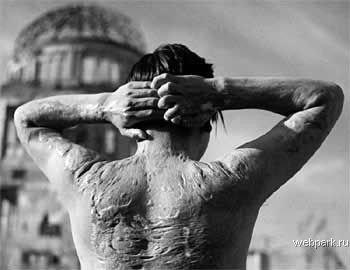
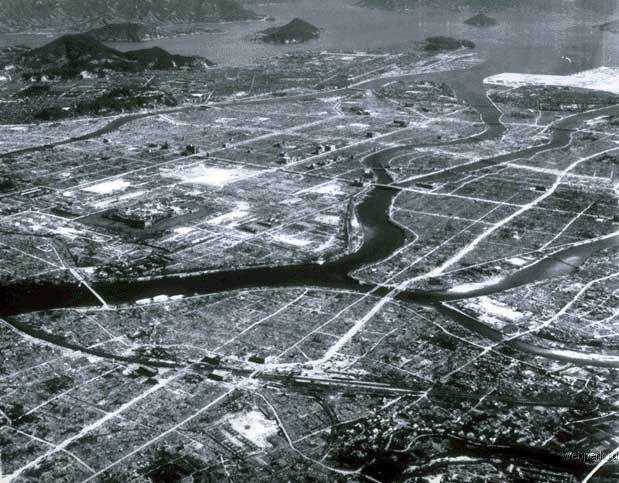
Even death from radiation damage overtakes the Japanese. Without any external cause of their health begins to plummet. They lose their appetite, and then begin to fall out hair. Large spots like burns from boiling water begin to appear all over the body. Then begins bleeding from the ears, nose and mouth, and as a consequence - death.
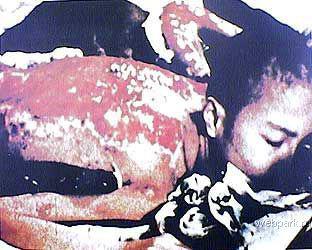
Doctor makes the patient an injection of vitamin "A" for the maintenance of the body. The result is terrible and unpredictable. The flesh begins to rot from the holes at the injection site, and then expanded, affecting internal organs. Either way, it leads to death.

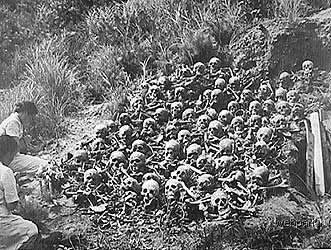
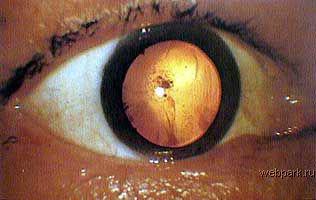
The photo shows the acquired cataracts from the flash of the explosion of the atomic bomb. The pupil - a small white dot in the center of the eyeball.
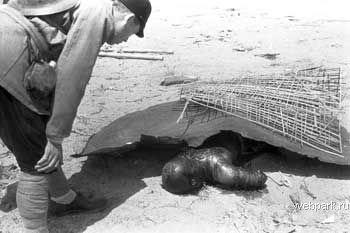
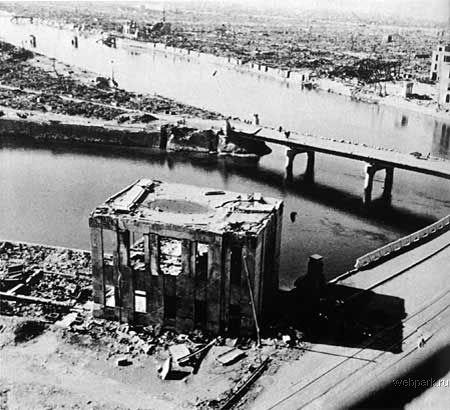
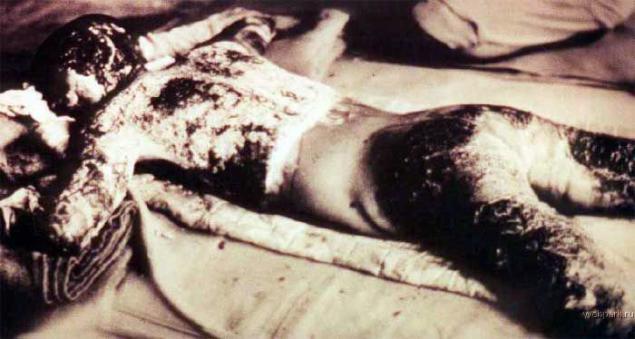
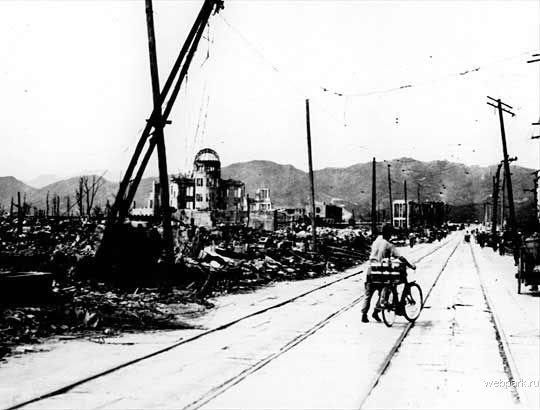
Part 3. Hibakusha
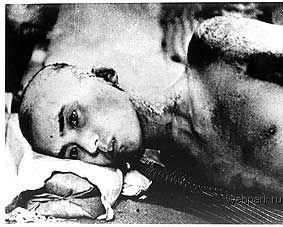
Hibakusha (Hibakusha) - widely used in Japan, a term denoting the victims or people somehow connected with the explosion in Hiroshima and Nagasaki. The Japanese word roughly translates as "the people affected by the explosion."

They and their children have been and still are the victims of brutal discrimination associated with the disease from the radiation. People think these people cursed and otherwise avoid them.
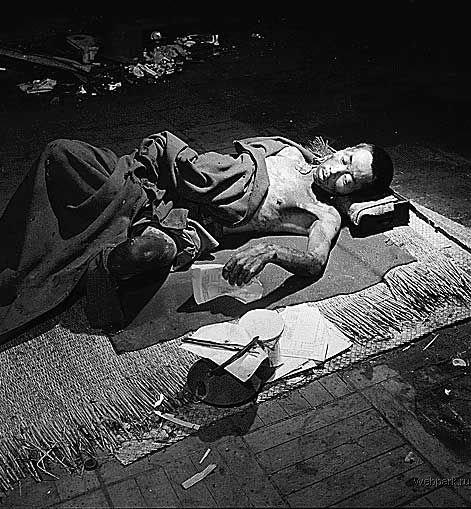
Many of them were dismissed from their jobs. Women hibakusha never marry, because many of them are afraid to have children. It is believed that nothing good marriage with hibakusha will come. Nobody wants to marry a man who will die anyway in a couple of years.
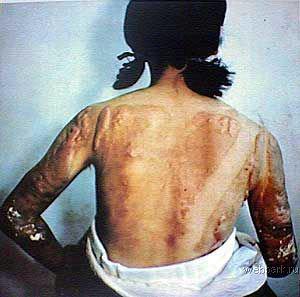
Part 4. Yamahata (Yamahata), a photographer in Nagasaki

August 10, 1945, several days after the bombing of Nagasaki, photographer Ёske Yamahata (Yosuke Yamahata), began photographing the effects of the tragedy. The city was dead. He walked through the dark, crumbling ruins, among the dead bodies hours. Late in the evening he took the last photo near the medical station in the north of the city. One day, he became the owner of the most exclusive photos taken immediately after the disaster of Hiroshima and Nagasaki.

Later he wrote: "The warm wind begins to rise, and here and there I saw a little fire lights, glowing in the darkness like a fox-fire. These were the remains of a large fire. Nagasaki was completely destroyed. »
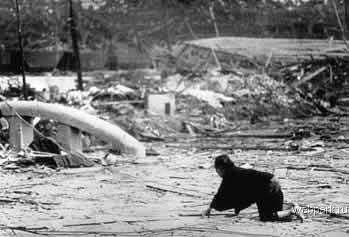
Photos Yamahata considered the most complete documentary evidence of the horrors of the atomic bombing. The New York Times called the photo "one of the most stunning photos, that have ever been made."

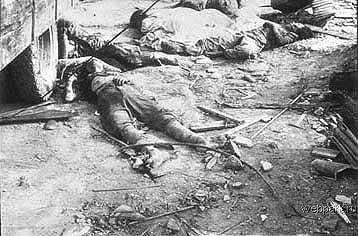
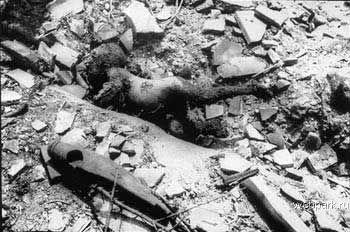


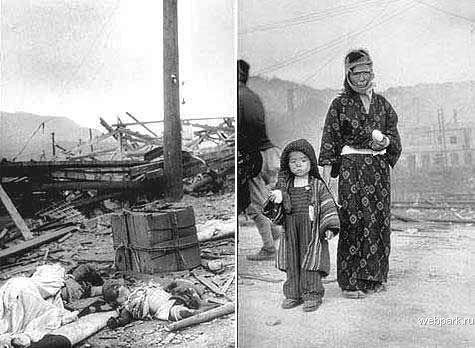
Ёske Yamahata terminally ill August 6, 1965 th, in his 48 th anniversary and after 20-years old after the bombing. He was diagnosed with cancer, most likely caused by the directional effects of radiation exposure that he received twenty years ago during a trip to Nagasaki. He died April 18, 1966 and is buried in the cemetery of Tama, Tokyo.
Newsreel
Webpark: Hiroshima 3 (12.24Mb)
- Download
Download without expanding
Webpark: Hiroshima 2 (2.24Mb)
- Download
Download without expanding
Webpark: Hiroshima 1 (2.91Mb)
- Download
Download without expanding
-

